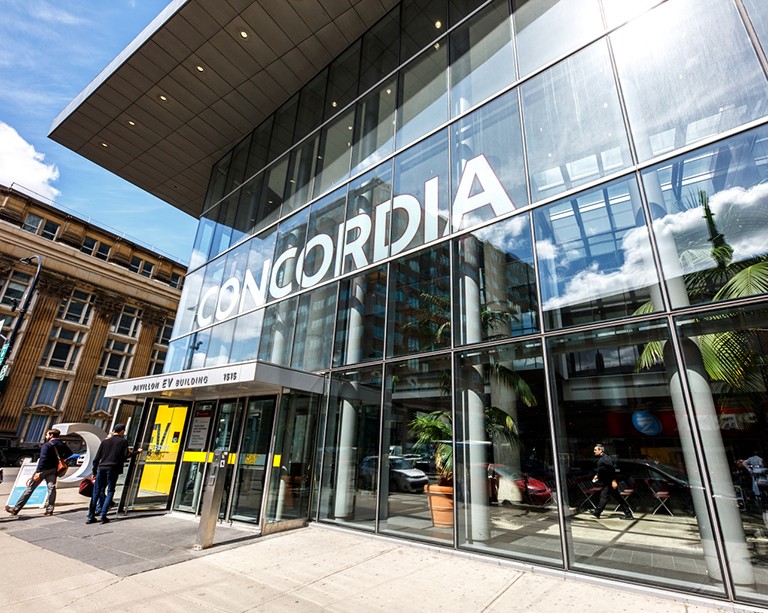The big lesson from past pandemics? Avoid panic-buying, says new Concordia research

COVID-19 upended almost every aspect of daily life, including consumer and retailer behaviour. However, it was not the first pandemic that changed how we shop.
In 2009-10, populations across the globe were rocked by the H1N1 swine flu outbreak. Mass panic-buying of personal hygiene products, such as hand sanitizer, was common. Just as with the early days of COVID-19, stores quickly sold out of suddenly in-demand items, with supply chains struggling to meet surging demand.
The swine flu pandemic claimed the lives of up to 300,000 people worldwide. Its two waves each lasted around 16 weeks, providing researchers with an ideal experiment to compare consumer behaviour and retailer responses to those from the outbreak of COVID-19.
Xiaodan Pan, an associate professor in the Department of Supply Chain and Business Technology Management at the John Molson School of Business, published a new paper on the topic in the Journal of Retailing and Consumer Services. In it, she uses the hand sanitizer market to see what was learned from the 2009-10 swine flu event and to develop lessons for consumers and retailers today.
Pan and her co-authors examined hand sanitizer sales from the United States spanning a 10-year period from 2008 to 2017. Weekly statistics were gathered from the NielsenIQ Retail Scanner Data, a database that tracks product prices and sales volumes as well as store characteristics from more than 38,000 stores across more than 90 participating retail chains. The researchers also collected data from the U.S. Centers for Disease Control and Prevention to track seasonal flu epidemics and the swine flu pandemic across the country.
Pan’s study found that there was a surge in demand for hand sanitizer as the swine flu pandemic was declared. This demand surge created initial shortages in hand sanitizer products. However, the industry strategically adapted to the stockpiling behaviour, increasing the supply of large pack-size sanitizer products that were in greatest demand. By the second wave of the swine flu pandemic, large pack-size hand sanitizer sales exceeded small pack-size sales, illustrating a shift in consumer behaviour and retailer product availability. The researchers found no evidence of price gouging by the major retailers. They also noted that there were clear winners among retailer types, with warehouse clubs that specialized in large pack-size products and drug stores that provided a great variety of products leading hand sanitizer sales.
 Xiaodan Pan: “The evidence shows that supply and demand will balance out quickly without price gouging.” Photo by David Ward
Xiaodan Pan: “The evidence shows that supply and demand will balance out quickly without price gouging.” Photo by David Ward
A decade of sanitizer sales data
In framing her study, Pan gathered a decade’s worth of weekly sanitizer sales data. “We could not just look at the swine flu pandemic,” Pan says. “We needed a natural experiment, so we used the 2008–09 seasonal flu epidemic (that preceded the 2009-10 swine flu pandemic) as the base case, and then we examined sanitizer sales during the 2009-10 swine flu pandemic as well as sales through seven subsequent seasonal flu epidemics.”
The study revealed three principal findings:
- Consumers and retailers learn from their experience. Comparing data from the two waves of the swine flu pandemic, the researchers found that retailers were better prepared during the second one, with a larger assortment of sanitizer products. While sales declined during subsequent seasonal flu epidemics, it took four seasons for sales to return to pre-pandemic levels indicating that both consumers and retailers held onto their pandemic behaviours after the pandemic concluded.
- Despite increased demand, prices did not soar. Significant price increases were not recorded across the sanitizer category. Changing buying patterns that favoured large pack-size purchases actually led to lower per-unit prices for consumers during the pandemic.
- Store format matters. Warehouse-club stores had higher sales increases of hand sanitizers during the pandemic than did other types of stores even though they had a limited product assortment. This is likely because the warehouse club stores specialized in the sale of large pack-size products. Drug stores also emerged as winners, but with a distinct strategy. By significantly expanding their product assortments, these stores attracted customers by offering a broader range of sanitizer options.
“I think the biggest lesson here is that there is no need for panic-buying. The evidence shows that supply and demand will balance out quickly without price gouging,” she says.
“Retail chains value their reputations, so they won't want to tarnish them by raising prices during a public health emergency to sidestep negative perceptions of price fairness.”
Martin Dresner of the University of Maryland, Guang Li of Queen’s University and Benny Mantin of the University of Luxembourg contributed to this study.
The Social Sciences and Humanities Research Council of Canada (SSHRC) supported this project.
Read the cited paper: “Stocking up on hand sanitizer: Pandemic lessons for retailers and consumers.”


